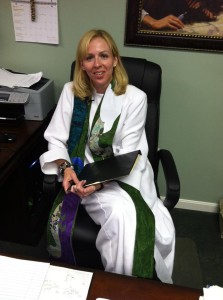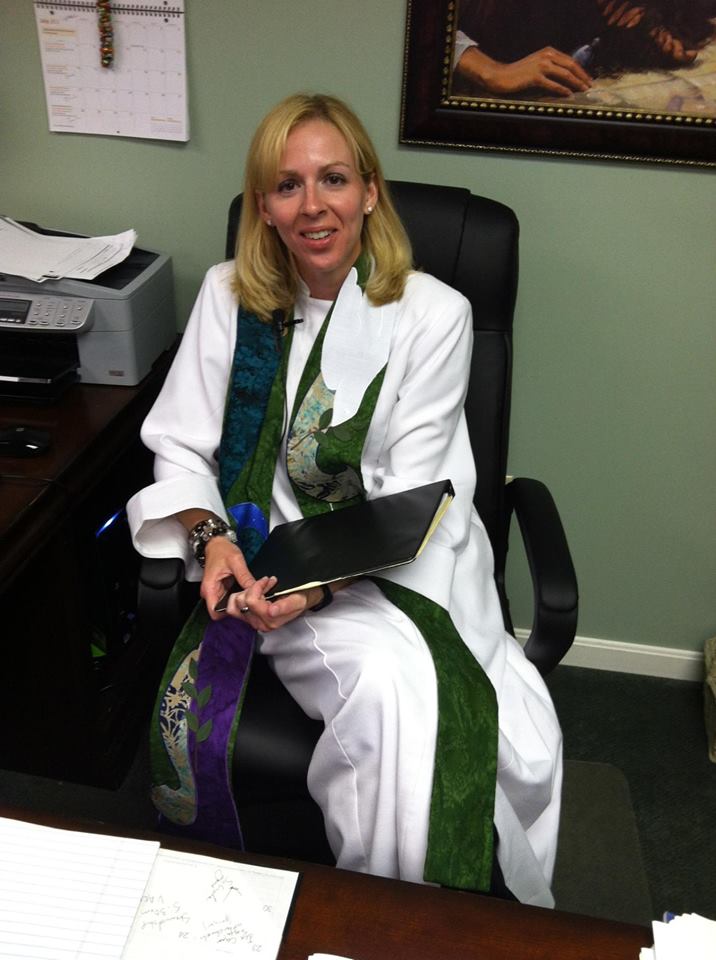Harleys at the Communion Table III – by Darcy Metcalfe Mudd
 “What is it that we now hold sacred?” In the second essay in this three part series, I explored this question a bit as well as how our cultural love affair with consumerism is reshaping our ideas of sacred ritual. The primary examples discussed were some of the ways we are witnessing our consumeristic culture shape our ideas of death and the Christian funeral. Thomas Long wisely notes that recent cultural shifts in the rituals involving the ways we care for our dead and accompany them to their final resting place are disturbing because of what they may be revealing about us. He asserts that if it is true that we are forgetting how to honor the bodies of those who have departed through sacred ritual, this is an indication that we are also more inclined to neglect, even torture, the bodies of those still living.[1] These cultural shifts reveal that we are forgetting how to recognize and care for the humanity of another person and relate at a meaningful level to our undeniable interconnectedness. And if this is true, it is deeply problematic.
“What is it that we now hold sacred?” In the second essay in this three part series, I explored this question a bit as well as how our cultural love affair with consumerism is reshaping our ideas of sacred ritual. The primary examples discussed were some of the ways we are witnessing our consumeristic culture shape our ideas of death and the Christian funeral. Thomas Long wisely notes that recent cultural shifts in the rituals involving the ways we care for our dead and accompany them to their final resting place are disturbing because of what they may be revealing about us. He asserts that if it is true that we are forgetting how to honor the bodies of those who have departed through sacred ritual, this is an indication that we are also more inclined to neglect, even torture, the bodies of those still living.[1] These cultural shifts reveal that we are forgetting how to recognize and care for the humanity of another person and relate at a meaningful level to our undeniable interconnectedness. And if this is true, it is deeply problematic.
What are we to do as ministers? What are we to do as the Church that exists in culture and within its own culture? Is the answer to reshape our worship and sacred rituals according to the desires of our culture’s consumeristic ideals? By doing this, I believe the Church would cease being the Church and become just another social club or venue for entertainment. And I also don’t think the answer is so simple.
In an interesting article written in 2006 which explored neuroscience and ritual, the authors concluded that sacred rituals of the church (such as fasting, prayer, worship, etc.) can be regarded as “costly” because they incur significant effort without prospect of immediate returns.[2] And I would contend that many of the sacred rituals of the church would be considered “costly” in the manner that they often times do not satiate our consumeristic ideals and our desire for instant gratification, narcissism, and entertainment. Participating in the life and sacred ritual of the church often times means a long-term life commitment, which asks a great deal from us with usually very little short-term returns on our investments. And this very nature of the Church is extremely countercultural in the midst of our love affair with consumerism.
Consumer culture attests that meaning manifests from ritual and the objective value of that meaning is getting what we want the way we want it. Whereas the Church, on the other hand, attests that meaning is something that cannot be fully grasped or obtained, but is slowly discovered in glimpses through sacred ritual in community. In the Church the intrinsic value of our meaning (and, therefore, ritual) is shaped around what we hold most sacred: love of God and neighbor. Both consumer culture and the Church shape ritual from the space of their highest values. And this is the exact point where Christ and Culture exist in painful paradox, as Richard Niebuhr would say. And at this place of paradox the tension is only expanding.
By observing the obvious shifts of sacred ritual within our Church and culture, it seems that an undeniable tension exists and is expanding between individualized/subjective ritual shaped by our love affair with consumerism and community-based/objective ritual shaped by a belief that there is something deeper at stake than our own self-directed whims and desires. And simultaneously, while we stand in this tension, I don’t believe that simply returning to our traditionally held sacred rituals as they have always been will resolve the tension and place of paradox. Nor do I believe the Church should reshape its ritual according to the desires of our culture’s consumeristic ideals. So what is the way forward; how do we resolve this tension between Church and culture?
I don’t think we can. This place of paradox seems to be exactly where the Church is called to be. If the life of Christ exemplified anything to the Church, it is that we are called to be countercultural. It seems the Church was birthed to live exactly in this place of paradox. In this place, the Church is called to be consciously countercultural with the ways we are shaping our ritual while also being purposeful in embracing an increasingly robust understanding of ritual and the sacredness of life in community. It is time to reexamine our sacred ritual in light of a changing world and culture with the intrinsic value of our existence (not the ideals of consumer culture) at the forefront: love of God and neighbor. Do our rituals reflect our individual mandate to love and communal ethic of justice? Are our rituals life-giving, life-honoring, God and neighbor-loving, Spirit-breathing, justice-seeking spaces of life and worship in community? The Church must always remember its call to be the ecclesia reformata, semper reformanda; the Church “reformed, and always being reformed.” The sacred ritual of the Church should not be excluded from this reformation.
Rev. Darcy Metcalfe Mudd is currently serving as Solo Pastor at First Presbyterian Church in Perrysburg, Ohio. Darcy’s passions include advocacy for women and children, as well as developing safe sanctuary/youth protection policies and resources. Darcy also currently serves on the Advocacy Committee for Women’s Concerns for the PC(USA).
[1] Thomas G. Long, Accompany Them with Singing: The Christian Funeral (Louisville: Westminster John Knox Press, 2009), p. 7
[2] Robert A. Emmons and Patrick McNamara, “Volume I: Evolution, Genes, and the Religious Brain,” When God and Science Meet: How Brain and Evolutionary Studies Alter our Understanding of Religion, edited by Patrick McNamara (Bosten: Praeger Perspective, 2006), p. 17.

